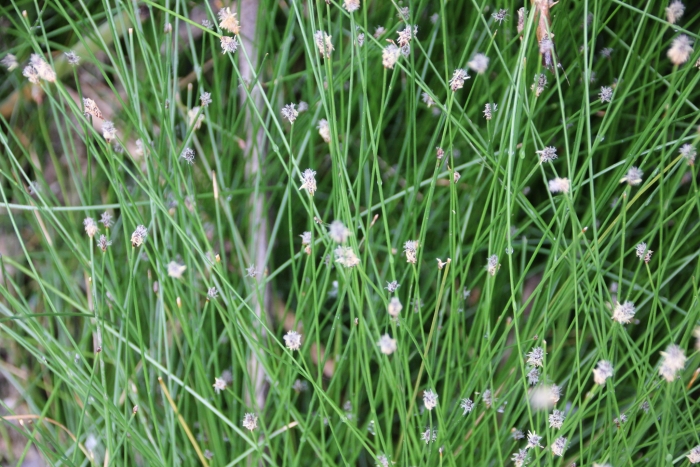Sand Spikerush
(Eleocharis montevidensis)
Sand Spikerush (Eleocharis montevidensis)
/
/

Millie Basden
CC BY 4.0
Image By:
Millie Basden
Recorded By:
Copyright:
CC BY 4.0
Copyright Notice:
Photo by: Millie Basden | License Type: CC BY 4.0 | License URL: http://creativecommons.org/licenses/by/4.0/ | Rights Holder: Millie Basden | Publisher: iNaturalist | Date Created: 2018-05-12T09:34:48-07:00 |



















Estimated Native Range
Summary
Eleocharis montevidensis, commonly known as Sand Spikerush, is a deciduous perennial grass native to wetlands, including marshes, wet meadows, and the edges of ponds and streams throughout the Southern and Southwestern United States, Central America, and South America. It typically grows to a height of 2 feet (0.6 meters) and can spread to a width of 3 feet (0.9 meters), forming dense tufts or mats. The erect, cylindrical stems are leafless and spongy, with a dark purplish or reddish-brown base that lightens toward the tips. The inflorescence is a small, oval-shaped spikelet situated at the stem’s tip, less than a centimeter long, with several flowers enveloped by brownish bracts. Flowering occurs in the summer, and while the flowers are not particularly showy, they add a subtle texture to water garden settings.
Sand Spikerush is valued for its ability to stabilize soil and filter water in wetland environments, making it a beneficial plant for erosion control and water purification in naturalized areas. It is often used in water gardens, rain gardens, and as a marginal aquatic plant. This species thrives in full sun to part shade and requires consistently moist to wet soil conditions. It is adaptable to a range of soil types, provided they are wet. While generally low-maintenance, it can spread aggressively in ideal conditions, potentially becoming invasive in some areas.CC BY-SA 4.0
Sand Spikerush is valued for its ability to stabilize soil and filter water in wetland environments, making it a beneficial plant for erosion control and water purification in naturalized areas. It is often used in water gardens, rain gardens, and as a marginal aquatic plant. This species thrives in full sun to part shade and requires consistently moist to wet soil conditions. It is adaptable to a range of soil types, provided they are wet. While generally low-maintenance, it can spread aggressively in ideal conditions, potentially becoming invasive in some areas.CC BY-SA 4.0
Plant Description
- Plant Type: Grass
- Height: 0.5-1.5 feet
- Width: 1-3 feet
- Growth Rate: Rapid
- Flower Color: N/A
- Flowering Season: Summer
- Leaf Retention: Deciduous
Growth Requirements
- Sun: Full Sun
- Water: High
- Drainage: Medium, Standing
Common Uses
Bird Garden, Butterfly Garden, Water Garden
Natural Habitat
native to wetlands, including marshes, wet meadows, and the edges of ponds and streams throughout the Southern and Southwestern United States, Central America, and South America
Other Names
Common Names: Sand Spike-Rush
Scientific Names: Eleocharis montevidensis , Eleocharis montevidensis var. montevidensis , Eleocharis arenicola , Eleocharis montevidensis f. angustior , Eleocharis palmeri , Eleocharis montana subsp. montevidensis , Limnochloa montevidensis , Scirpus arenicola , Scirpus montevidensis , Trichophyllum arenicola
GBIF Accepted Name: Eleocharis montevidensis Kunth